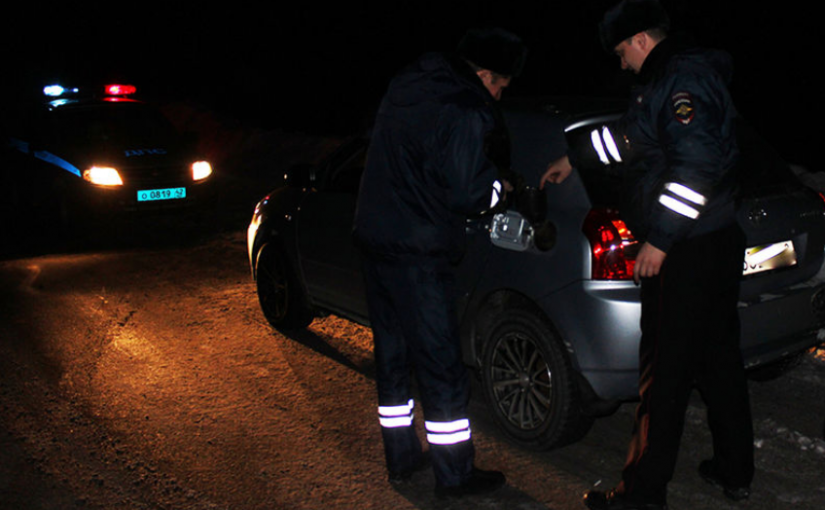An unlit night track with rare foci of civilization does not cause any desire to once again slow down and even more so get out of the car. There is no choice when the law requires it.
If I caught up with a DPS car, is it worth it to overtake?
The main document for the driver is SDA. Clause 6.11 establishes that “the request to stop the vehicle is made using a loud-speaking device or with a gesture of a hand aimed at the vehicle,” and the driver must stop at the place indicated to him.” There are no restrictions on the type of road and time of day. It is understood that the patrol works to ensure traffic safety, and if it stops in case of doubtful circumstances for the driver, there is a good reason.
Clause 1.2 of the SDA describes what the traffic controller should look like when serving. The presence of uniforms and/or a distinctive sign and equipment is mandatory. Regulators include police and military vehicle inspectors, road maintenance workers, duty officers at railway crossings and ferry crossings in the exercise of their duties, authorized persons from among the employees of transport security units.
As you can see, the list is quite extensive, and some of them have all the “distinctive” features except a reflective vest. Of course, you need to act on the situation. If a road worker is persistently waving at you, and behind him, you can see an ice rink standing across the road, it is worth fulfilling his requirements. But if a dubious person waves a rod on an empty road, standing near an ordinary car, this is a completely different matter.
You can look at the order of the Ministry of Internal Affairs No. 664, in other words – the rules of the traffic police. Paragraph 62 reports that “the place, time, forms and methods of monitoring traffic by employees are determined by the head of the traffic police unit”. Paragraph 65 already explicitly states that work at night is by no means forbidden: “In the dark and conditions of limited visibility, an employee must have a luminous wand (wand with retro-reflective material elements) and retro-reflective equipment.”
Verification is inevitable: which cars are most often stopped by traffic cops
Clause 84 of the same regulation lists 14 reasons for stopping a vehicle. Again, without reservation at the place and time of day. If “there is reason to believe,” a traffic inspector can stop you anywhere. It is stipulated that the stopping place should be selected taking into account the requirements of traffic rules. But it is possible to brake cars in forbidden places if traffic safety is ensured (for example, by the flashing lights of an official car).
If you still found the traffic cops to be potentially dangerous and ignored their demands, they can only pursue you on a patrol car with a special light and sound signals turned on (paragraph 96 of the regulations). You can watch in a personal car, but you can’t chase it.
The good old recommendation to go to the nearest stationary post is now completely useless due to the almost complete absence of these same posts. Faster and more logical in this case, turn into the nearest settlement with the police department.
Finally, we recall that under article 12.25.2 of the Code of Administrative Offenses of the Russian Federation, failure to comply with the lawful requirement of a police officer to stop is punishable by a fine of 500-800 rubles.
